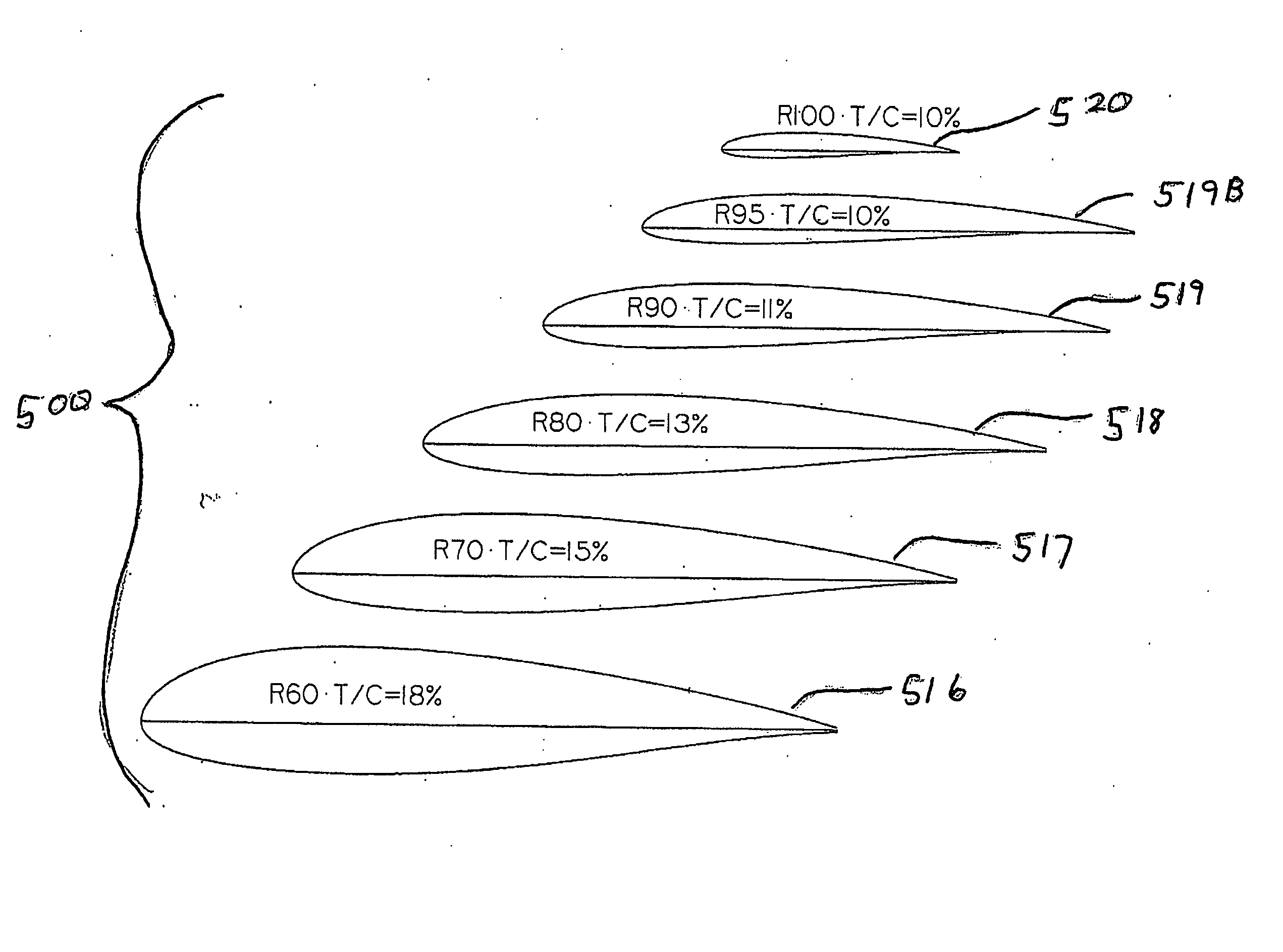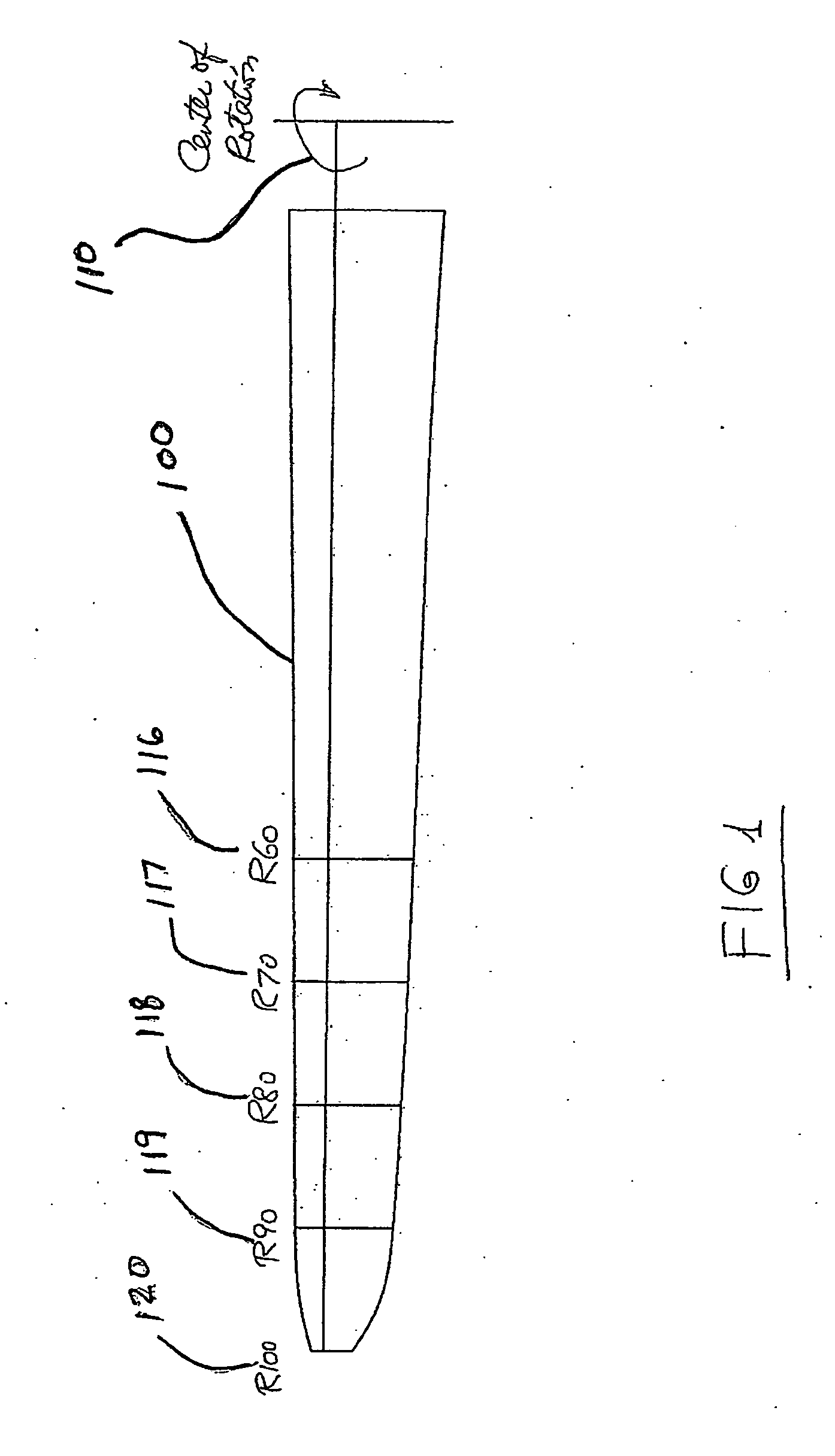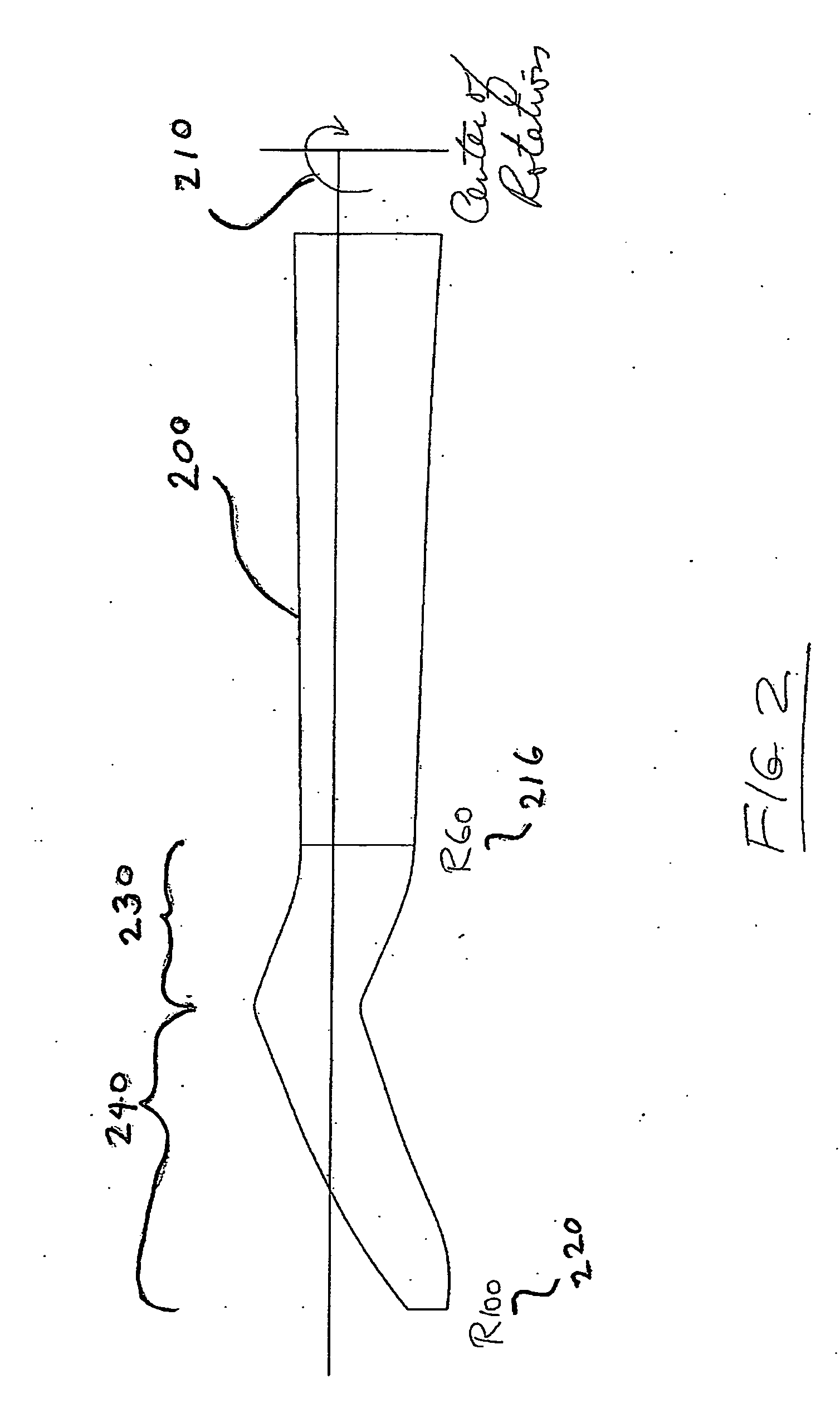High performance outboard section for rotor blades
a rotor blade and high-performance technology, applied in the field of rotor blades, can solve the problems of rotor noise level increase, rotor efficiency decrease, oscillatory rotor load and vibration of rotor blades, etc., and achieve the effects of improving efficiency, improving efficiency, and improving hover efficiency
- Summary
- Abstract
- Description
- Claims
- Application Information
AI Technical Summary
Benefits of technology
Problems solved by technology
Method used
Image
Examples
Embodiment Construction
[0023]In FIG. 1, a rotor blade 100 has a center of rotation 110, and the Figure is marked 116-120 to designate percentage distances from the center of rotation of the blade to the tip. In accordance with one class of novel methods disclosed herein, whereby the blade was designed without taking into account the detrimental effects of the high Mach numbers on the blade from R63 to R100. The result is a blade that would hover at sea level at maximum RPM with a tip Mach number of only 0.72, the tip Mach number of the advancing blade at maximum forward speed in helicopter mode would be 0.9, and at R70 for the same conditions would be 0.68. These Mach numbers are excessive for efficient rotor operation and low noise level at the desired lift coefficients, and with the desired airfoil thicknesses of 15% at R70 and 10% at R100.
[0024]In FIG. 2, the blade design of FIG. 1 is modified to include forward swept 230 and aft swept 240 portions, which together provide a swept portion of at least 40...
PUM
 Login to View More
Login to View More Abstract
Description
Claims
Application Information
 Login to View More
Login to View More - R&D
- Intellectual Property
- Life Sciences
- Materials
- Tech Scout
- Unparalleled Data Quality
- Higher Quality Content
- 60% Fewer Hallucinations
Browse by: Latest US Patents, China's latest patents, Technical Efficacy Thesaurus, Application Domain, Technology Topic, Popular Technical Reports.
© 2025 PatSnap. All rights reserved.Legal|Privacy policy|Modern Slavery Act Transparency Statement|Sitemap|About US| Contact US: help@patsnap.com



